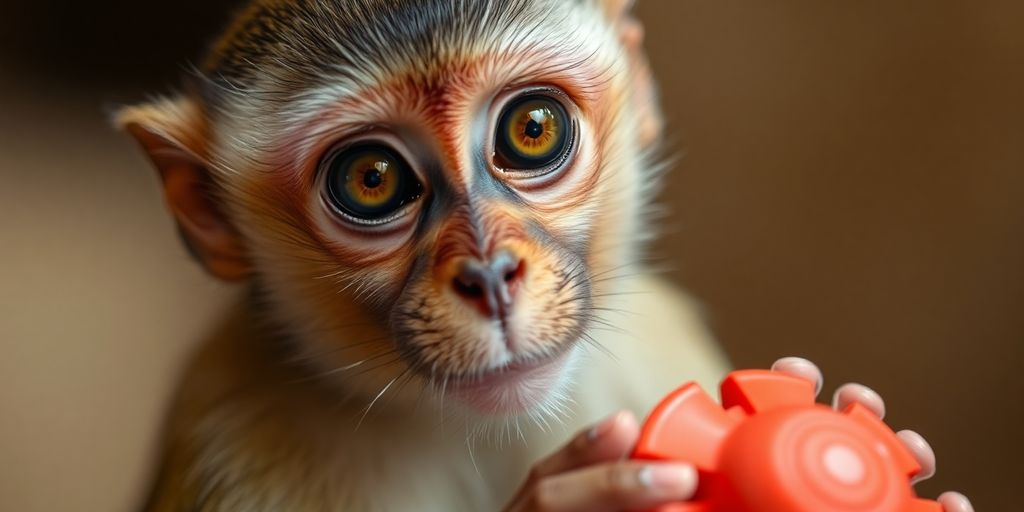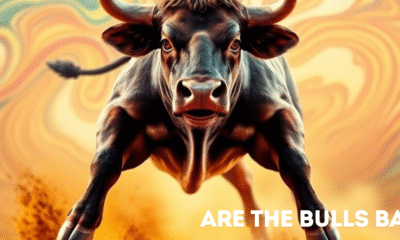Animals
Animal Behaviour Studies: Innovations in Understanding Animal Minds

Understanding how animals think and behave is a fascinating area of study. Researchers are using new methods to explore the minds of various species, revealing insights into their behaviours, communication, and even their emotions. This article looks at the latest innovations in animal behaviour studies, providing a clearer picture of the cognitive abilities of different animals.
Key Takeaways
- Animal behaviour can be studied from two main perspectives: proximate, which looks at immediate causes, and ultimate, which explores evolutionary reasons.
- New techniques, like automated learning tasks and psychometrics, are helping researchers understand animal cognition in natural settings.
- Play is crucial for the development of cognitive skills in animals, with different species showing unique play behaviours.
- Tool use and problem-solving abilities have been observed in various animals, highlighting their intelligence and adaptability.
- Social interactions and communication among animals reveal their emotional understanding and learning capabilities.
Proximate and Ultimate Perspectives in Animal Behaviour Studies
Understanding animal behaviour requires looking at it from two main angles: proximate and ultimate perspectives. These two approaches help us grasp the complexities of animal minds.
Understanding Proximate Mechanisms
Proximate mechanisms focus on the immediate causes of behaviour. This includes:
- Stimuli that trigger specific actions.
- Neural processes that encode these stimuli into behaviours.
- The developmental biology that shapes these behaviours over time.
For example, when a bird sings, it is responding to environmental cues, and its brain processes these signals to produce sound.
Exploring Ultimate Causes
Ultimate causes look at the evolutionary reasons behind behaviours. Key questions include:
- What ecological factors influence the evolution of a behaviour?
- How does evolutionary history shape these traits?
- What are the costs and benefits associated with specific behaviours?
Understanding these aspects helps us see how behaviours have adapted over time to meet survival needs.
Integrating Proximate and Ultimate Approaches
To fully understand animal behaviour, it is essential to integrate both perspectives. This means:
- Combining insights from cognitive science and evolutionary biology.
- Recognising that behaviours are shaped by both immediate and historical factors.
- Developing research methods that bridge these two fields.
Integrating these approaches can lead to a richer understanding of how animal minds work and evolve.
By examining both proximate and ultimate perspectives, researchers can gain a more comprehensive view of animal behaviour, leading to innovative insights into the minds of various species.
Innovative Methods in Animal Cognition Research
Automated Learning Tasks
Recent advancements in automated learning tasks have transformed how researchers study animal cognition. These tasks allow animals to engage in learning without constant human supervision. For instance, researchers have successfully implemented automated systems that enable animals to complete tasks at their own pace, providing valuable insights into their cognitive abilities.
Use of Psychometrics in the Wild
The application of psychometric methods in natural settings is still in its infancy. However, it holds great promise for standardising cognitive assessments across species. By employing these methods, researchers can gather data on cognitive performance in wild animals, which could lead to a better understanding of their mental capabilities.
Technological Advances in Cognitive Testing
Technological innovations, such as touch screen displays and embedded cameras, are paving the way for more sophisticated cognitive testing. These tools can help researchers observe spontaneous behaviours, such as tool use and social interactions, in a more natural environment. The integration of these technologies into field studies is crucial for advancing our understanding of animal cognition.
The future of animal cognition research lies in bridging the gap between laboratory studies and natural behaviours, allowing for a more comprehensive understanding of how animals think and learn.
| Methodology | Description | Advantages |
|---|---|---|
| Automated Learning Tasks | Tasks that animals can complete independently. | Reduces human bias and increases data volume. |
| Psychometric Assessments | Standardised tests for cognitive abilities in the wild. | Allows for cross-species comparisons. |
| Technological Innovations | Use of advanced tools like touch screens and cameras in natural settings. | Captures spontaneous behaviours effectively. |
By employing these innovative methods, researchers are making significant strides in understanding the complexities of animal minds, ultimately enhancing our knowledge of animal behaviour and cognition.
The Role of Play in Animal Behaviour
Play Among Birds
Play is a fascinating aspect of animal behaviour, particularly in birds. Recent studies have shown that play is not just a frivolous activity but serves important functions. For instance, young chickens engage in various playful activities, such as jumping and sparring, which may help them develop social skills and prepare for future challenges. Play can be crucial for survival.
Mammalian Play Behaviour
Mammals also exhibit playful behaviours that are essential for their development. Young mammals often engage in play fighting, which helps them learn important skills for hunting and social interactions. Some key points about mammalian play include:
- Social bonding: Play helps strengthen relationships among individuals.
- Skill development: It prepares young animals for adult challenges.
- Stress relief: Play can reduce anxiety and promote well-being.
Implications of Play for Cognitive Development
The implications of play extend beyond immediate benefits. Engaging in play can enhance cognitive abilities, leading to better problem-solving skills and adaptability. Research indicates that animals that play more tend to be more intelligent.
Engaging in play is not just fun; it is a vital part of learning and development for many species.
In summary, play is a significant behaviour in the animal kingdom, contributing to social skills, cognitive development, and overall survival. Understanding these behaviours can provide insights into the minds of animals and their evolutionary adaptations.
Tool Use and Problem-Solving in Animals
Chimpanzees and Tool Use
Chimpanzees are well-known for their ability to use tools. They often use sticks to extract termites from mounds, showcasing their problem-solving skills. Research shows that these skills develop over time, with young chimps learning from older ones. This learning process highlights the importance of social interactions in developing tool use.
Problem-Solving in Otters
Otters are another remarkable example of tool use. They commonly use rocks to crack open shellfish. Recent studies have shown that female otters tend to use a wider variety of tools compared to males. This is likely due to their smaller size, which makes it harder for them to open prey without assistance. Their ability to adapt and innovate is crucial for their survival.
Innovative Behaviours in Birds
Birds, particularly crows and parrots, exhibit impressive problem-solving abilities. They can use sticks to reach food or even drop stones into water to raise the water level and access floating food. These behaviours demonstrate a level of cognitive complexity that was once thought to be unique to humans.
| Animal Type | Tool Used | Purpose |
|---|---|---|
| Chimpanzees | Sticks | Extracting termites |
| Otters | Rocks | Cracking open shellfish |
| Crows | Sticks/Stones | Accessing food |
The ability to use tools is not just a human trait; many animals have shown that they can innovate and adapt their behaviours to solve problems effectively. This understanding helps us appreciate the cognitive abilities of various species.
Social Cognition and Communication in Animals

Recognising Emotions in Others
Animals have a remarkable ability to recognise emotions in their peers. This skill is crucial for social interactions and can be observed in various species. For example:
- Dogs can read human facial expressions and respond accordingly.
- Primates often show empathy by comforting distressed group members.
- Birds can detect changes in the behaviour of their flock mates, indicating emotional states.
Vocal Communication in Birds
Birds are known for their complex vocalisations, which serve various purposes. Their communication can include:
- Alarm calls to warn others of predators.
- Mating calls to attract partners.
- Social calls to maintain group cohesion.
| Bird Species | Type of Communication | Purpose |
|---|---|---|
| Song Sparrow | Song | Attract mates |
| American Crow | Caw | Alert others of danger |
| Parrots | Mimicry | Social bonding |
Social Learning and Cultural Transmission
Animals also engage in social learning, where they learn from observing others. This can lead to cultural transmission, where behaviours are passed down through generations. Key points include:
- Tool use in chimpanzees, learned from observing others.
- Foraging techniques in birds that vary by region, showing local traditions.
- Vocal dialects in orcas that differ between pods, indicating cultural identity.
Understanding how animals communicate and learn from each other is vital for grasping their social structures and behaviours. This knowledge can help in conservation efforts and improving human-animal interactions.
In summary, the study of social cognition and communication in animals reveals a complex web of interactions that highlight their cognitive abilities and emotional depth. These insights are essential for appreciating the rich inner lives of animals.
The Canine Mind: Insights from Domestic Dogs
Behavioural Traits in Dogs
Domestic dogs are among the most studied animals, with over 471 million pet dogs worldwide. This makes every home a unique place to observe dog behaviour. Research has shown that dogs exhibit a variety of traits, including:
- Impulsiveness: Some dogs act quickly without thinking.
- Persistence: Others keep trying to solve problems.
- Independence: Certain breeds prefer to work alone.
Problem-Solving Skills
A study from the University of Helsinki tested 987 dogs on their problem-solving abilities. The dogs were given tasks that required them to think critically. For example, they had to figure out how to get a treat from a cylinder that could only be accessed from the ends. The results showed that dogs who were better at solving problems tended to be more independent and less trainable at home.
| Trait | Description | Example Breed |
|---|---|---|
| High Impulsiveness | Quick to act without thinking | Belgian Malinois |
| Good Problem Solving | Excels in tasks but may be hard to train | Border Collie |
| High Trainability | Easily learns commands and tasks | Golden Retriever |
Human-Dog Interaction Studies
Dogs and humans share a special bond. Recent studies have shown that dogs can imitate human actions, even when they see them on a screen. This ability to understand and respond to human cues is significant. It suggests that dogs can learn from images, not just real-life interactions.
Understanding the evolution of canine cognition helps us appreciate the psychology of dogs, from selective breeding to contemporary advancements in research.
In conclusion, the study of the canine mind reveals much about how dogs think and behave. Their unique traits and abilities not only enhance their roles as pets but also provide insights into their evolutionary journey alongside humans.
Evolutionary Perspectives on Animal Cognition
Understanding how animal minds have evolved is crucial for grasping the evolutionary roots of a mindful cognition. This section explores how cognition is shaped by evolutionary processes and the ecological contexts that influence cognitive traits.
Natural Selection and Cognitive Traits
Natural selection plays a significant role in the development of cognitive abilities. Key points include:
- Variation: Different species exhibit a wide range of cognitive skills.
- Heritability: Cognitive traits can be passed down through generations.
- Fitness Benefits: Certain cognitive abilities enhance survival and reproduction.
Comparative Studies Across Species
Comparative studies help us understand how cognitive traits have evolved. These studies often focus on:
- Evolutionary History: How traits have developed over time.
- Ecological Contexts: The environments that shape cognitive abilities.
- Behavioural Outcomes: How cognition affects behaviour in different species.
Fitness Consequences of Cognitive Abilities
The fitness approach examines how cognitive traits impact an animal’s survival. Important aspects include:
- Cognitive Variation: Differences in cognitive abilities among individuals.
- Selection Pressures: Factors that favour certain cognitive traits.
- Ecological Relevance: How cognitive skills relate to real-world challenges.
Understanding the natural context under which cognitive functions evolve provides a unique perspective that complements traditional studies of cognition.
By integrating evolutionary and cognitive studies, we can gain a deeper insight into how animal minds have developed and adapted over time.
Perception and Sensory Processing in Animals
Understanding how animals perceive their environment is crucial for studying their behaviour. Senses are systems by which animals receive information about their surroundings. The main senses include:
- Vision: Helps in detecting light and movement.
- Hearing: Important for communication and detecting danger.
- Olfaction: Allows animals to smell and identify food or predators.
- Taste: Helps in identifying edible items.
- Touch: Provides information about the environment through physical contact.
Visual Perception
Visual perception is vital for many animals. It allows them to navigate their surroundings, find food, and avoid predators. For example, birds have excellent vision, which helps them spot insects from a distance.
Olfactory and Auditory Processing
Olfactory processing is particularly important for animals like dogs, which have a highly developed sense of smell. This ability helps them track scents over long distances. Similarly, auditory processing enables animals to communicate and respond to their environment effectively.
Role of Sensory Systems in Behaviour
The sensory systems play a significant role in shaping animal behaviour. They help animals:
- Detect threats: Quick reactions to predators can be life-saving.
- Find mates: Senses help in identifying potential partners.
- Locate food: Animals use their senses to find and identify food sources.
Understanding how animals perceive their environment can help us learn more about their behaviour and cognitive abilities.
In summary, the study of perception and sensory processing is essential for understanding how animals interact with their environment and make decisions based on the information they receive.
Learning and Memory in Animal Behaviour
Associative Learning
Learning is a vital part of how animals adapt to their surroundings. It allows them to connect different experiences and make better choices. Here are some key points about associative learning:
- Associative learning helps animals link events, like associating a sound with food.
- It can be seen in various species, from birds to mammals.
- This type of learning is crucial for survival, as it helps animals remember where to find food or avoid dangers.
Spatial Memory
Spatial memory is essential for animals that need to navigate their environment. It allows them to remember locations of resources. Some important aspects include:
- Animals that store food, like squirrels, often have better spatial memory.
- Studies show that species living in harsher climates tend to have larger brain areas related to memory.
- Spatial memory helps animals find their way back to hidden food caches.
Long-Term Memory and Its Costs
Long-term memory is the ability to retain information over extended periods. While it is beneficial, it can also have costs:
- Animals may need to use energy to maintain memories.
- Long-term memory can influence behaviours, such as migration patterns.
- Memory costs can affect an animal’s ability to adapt to new situations.
Understanding how animals learn and remember is crucial for grasping their behaviour. It reveals how they interact with their environment and make decisions that affect their survival.
| Memory Type | Duration | Example Use |
|---|---|---|
| Short-Term Memory | Seconds to minutes | Avoiding already used food patches |
| Long-Term Memory | Days to years | Finding cached food in winter |
| Working Memory | Ongoing tasks | Distributing food to offspring |
Bridging Gaps Between Cognitive Science and Behavioural Ecology
Challenges in Integrating Disciplines
Integrating cognitive science and behavioural ecology presents several challenges:
- Different Terminology: The term “behaviour” has different meanings in each field, leading to confusion.
- Independent Research Lines: Most studies have focused on either cognition or behaviour without linking the two.
- Lack of Shared Frameworks: There is a need for common frameworks to study how cognition influences behaviour and vice versa.
Successful Case Studies
Some studies have successfully bridged the gap:
- Cognitive Ecology: This emerging field combines insights from both disciplines to understand how cognition affects behaviour in natural settings.
- Behavioural Ecology Approach (BEA): This approach examines individual differences in cognitive abilities and their impact on fitness, linking cognition directly to behaviour.
- Comparative Studies: Research comparing cognitive traits across species has provided insights into the evolutionary significance of cognition.
Future Directions for Collaborative Research
To enhance our understanding of animal minds, future research should focus on:
- Integrating Methods: Combining experimental methods from both fields to study cognition in ecological contexts.
- Exploring Evolutionary Pressures: Investigating how ecological and social pressures shape cognitive abilities.
- Developing New Models: Creating models that depict the relationship between cognitive abilities and behaviours, helping to predict fitness outcomes.
The integration of cognitive science and behavioural ecology is essential for a comprehensive understanding of animal behaviour. This collaboration can lead to innovative findings that enhance our knowledge of how animal minds work and evolve.
| Aspect | Cognitive Science | Behavioural Ecology |
|---|---|---|
| Focus | Individual cognition | Social and ecological behaviours |
| Methodology | Experimental lab studies | Field studies and observations |
| Key Questions | How do animals think? | Why do animals behave in certain ways? |
Case Studies in Animal Behaviour Research
Innovative Findings in Primates
Research on primates has revealed fascinating insights into their social structures and problem-solving abilities. For instance, studies have shown that certain species, like chimpanzees, can use tools to obtain food, demonstrating advanced cognitive skills. Key findings include:
- Tool Use: Chimpanzees using sticks to extract termites from mounds.
- Social Learning: Young chimps learn from observing older members of their group.
- Problem-Solving: Experiments show they can solve complex puzzles to access rewards.
Bird Behavioural Studies
Birds, particularly corvids, have shown remarkable intelligence. Research highlights include:
- Cognitive Flexibility: Corvids can adapt their strategies based on changing environments.
- Social Complexity: They exhibit behaviours that suggest an understanding of social hierarchies.
- Innovative Tool Use: Some species create tools from leaves and twigs to access food.
Unique Discoveries in Marine Animals
Marine animals, such as dolphins and octopuses, have also been subjects of intriguing studies. Notable discoveries are:
- Communication: Dolphins use a variety of sounds to communicate, indicating a complex social structure.
- Problem-Solving: Octopuses have been observed escaping enclosures, showcasing their intelligence.
- Play Behaviour: Both dolphins and octopuses engage in play, which is believed to enhance their cognitive skills.
Understanding these behaviours not only sheds light on the evolution of intelligence in animals but also helps us appreciate the complexity of their minds.
In summary, these case studies illustrate the diverse and innovative ways animals adapt and thrive in their environments, revealing the intricate workings of their minds.
Conclusion
In summary, the study of animal behaviour has made significant strides in recent years, revealing much about how animals think and act. Researchers have uncovered fascinating insights, such as the ability of finches to learn songs and the clever use of tools by chimpanzees and otters. These discoveries not only enhance our understanding of animal minds but also shed light on our own cognitive abilities. As we continue to explore the connections between animal behaviour and cognition, it becomes clear that integrating different scientific approaches is essential. By combining insights from evolutionary ecology and cognitive science, we can gain a more complete picture of how animal minds have evolved and how they function in the wild. This ongoing research holds great promise for deepening our appreciation of the complex lives of animals and their remarkable capabilities.
Frequently Asked Questions
What are proximate and ultimate perspectives in animal behaviour?
Proximate perspectives look at how behaviours happen, like what triggers them and how they develop. Ultimate perspectives explore why these behaviours exist, focusing on their evolutionary purpose.
What new methods are being used in animal cognition research?
Researchers are using automated learning tasks, tools from psychology in natural settings, and advanced technology to test animal intelligence.
Why is play important for animals?
Play helps animals learn skills they need for survival, like hunting and social interactions. It can also support brain development.
How do animals use tools?
Many animals, like chimpanzees and otters, use tools to solve problems and access food, showing their ability to think creatively.
What can we learn from studying canine behaviour?
Dogs, being closely associated with humans, provide insights into social behaviour and problem-solving, helping us understand both dog and human minds.
How does evolution affect animal cognition?
Cognition can evolve like any other trait, influenced by natural selection. Studying this helps us understand how intelligence varies among species.
What role does sensory processing play in behaviour?
Animals rely on their senses to interact with the world, which affects how they behave, find food, and avoid danger.
How can cognitive science and behavioural ecology work together?
By combining these fields, researchers can gain a more complete picture of animal behaviour, considering both mental processes and environmental influences.
-

 Business5 days ago
Business5 days agoS&P 500 Soars in Best May in Decades Amid Tariff Relief and Nvidia’s Surge
-

 Healthcare6 days ago
Healthcare6 days agoAttention Economy Arms Race: Reclaim Your Focus in a World Designed to Distract You
-

 Immigration5 days ago
Immigration5 days agoTrump’s Immigration Crackdown: Legal Battles and Policy Shifts
-

 Government5 days ago
Government5 days agoTrump Administration’s Government Reshaping Efforts Face Criticism and Legal Battles
-

 Business5 days ago
Business5 days agoUS Stock Market Soars in May Amidst Tariff Tensions and Inflation Worries
-

 Business5 days ago
Business5 days agoTrump’s Tariffs: A Global Economic Reckoning
-

 Foreign Policy2 days ago
Foreign Policy2 days agoInside Schedule F: Will Trump’s Federal Workforce Shake-Up Undermine Democracy?
-

 Press Release2 days ago
Press Release2 days agoIn2space Launches Campaign to Make Space Travel Accessible for All















